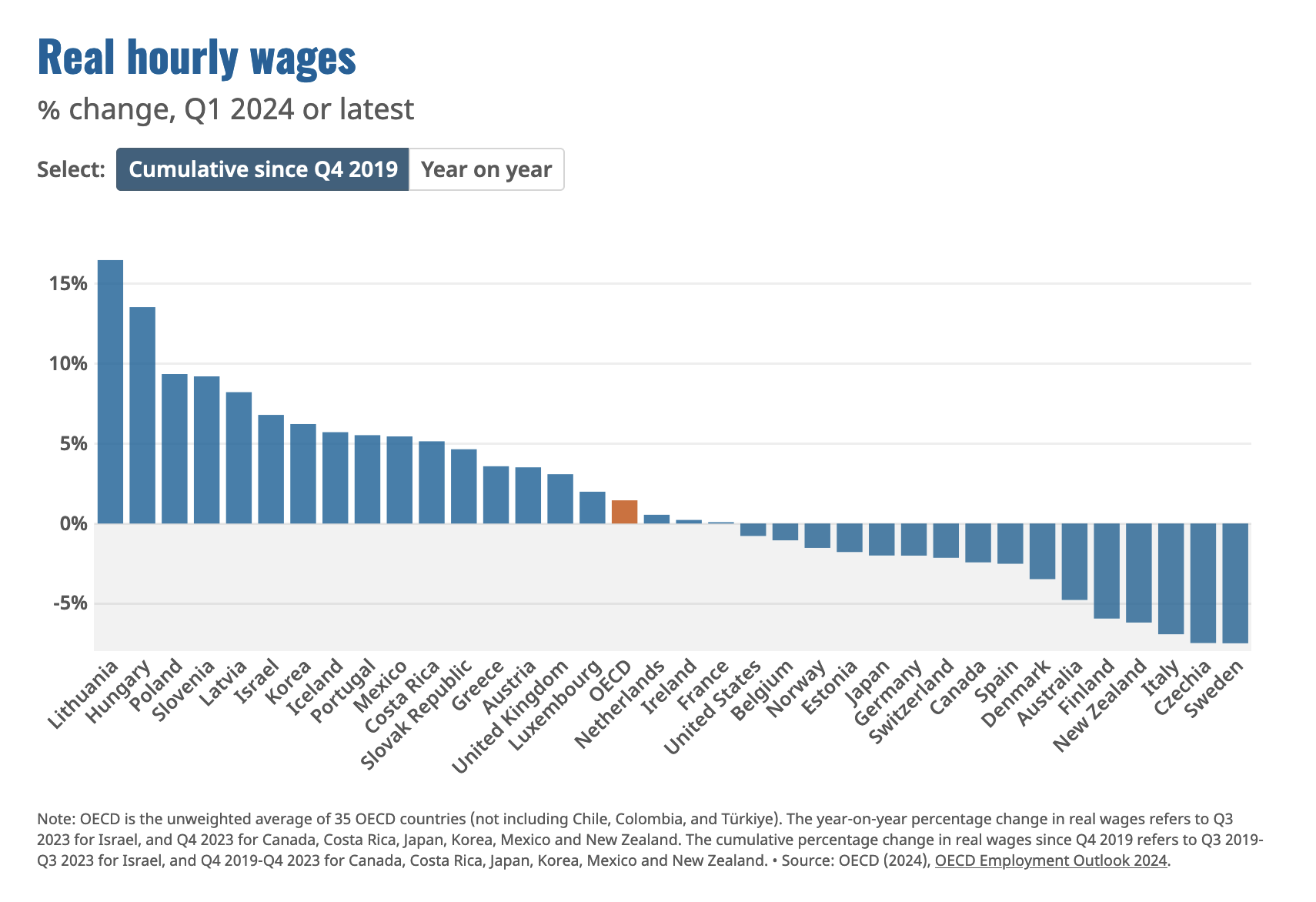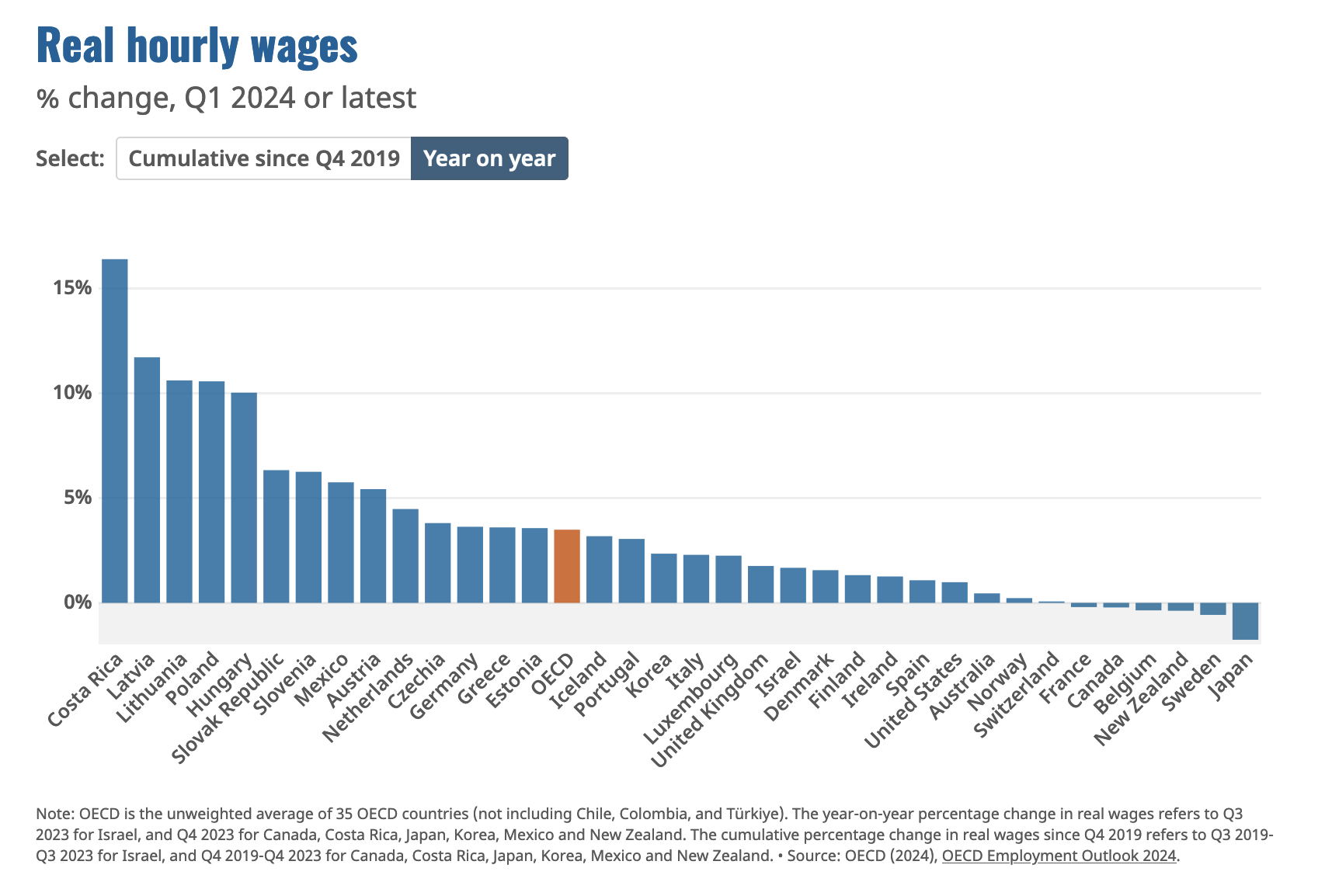Real wages in Czechia and Sweden fell most in OECD over past five years
Real wages in the Czech Republic fell by 7.5 percent between the last quarter of 2019 and the first quarter of this year. Sweden saw the same decline over the same period. In both countries, real wages fell the most among Organisation for Economic Co-operation and Development (OECD) member countries, according to the employment outlook published by the OECD
Real wages in Italy recorded the third largest decline since 2019, down 6.9 per cent. This is followed by New Zealand, where real wages fell by 6.2 per cent over the same period, and Finland with a 5.9 per cent decline.
At the other end of the ranking is Lithuania, where real wages have risen by 16.5 percent since the end of 2019. This is followed by Hungary with a 13.5 percent increase and Poland, where real wages increased by 9.3 percent. Employees in Slovenia improved by 9.2 percent on average and in Latvia by 8.2 percent. On average across OECD countries, wages rose by 1.5 per cent in real terms over five years.
The Czech Republic fares better on a year-on-year basis. In the first quarter, real wages in the Czech Republic were 3.8 per cent higher than in the same period last year. This is the eleventh highest increase among OECD countries. Costa Rica recorded the highest increase of 16.4 per cent, followed by Latvia with a year-on-year increase of 11.7 per cent. Japan, on the other hand, recorded the largest decline, by 1.8 per cent. On average, wages in OECD countries rose by 3.5 per cent in real terms over the year.
In the fourth quarter of last year, according to the CZSO, average gross wages in the Czech Republic rose by 6.3 percent year-on-year. However, due to still high inflation, it fell by 1.2 percent in real terms. In the first quarter of this year, however, it rose by 4.8 percent in real terms, while increasing by seven percent year-on-year.
Source: OECD and CTK
The full OECD Employment Outlook 2024 can be found on the link below:
https://www.oecd.org/en/publications/oecd-employment-outlook-2024_ac8b3538-en.html










